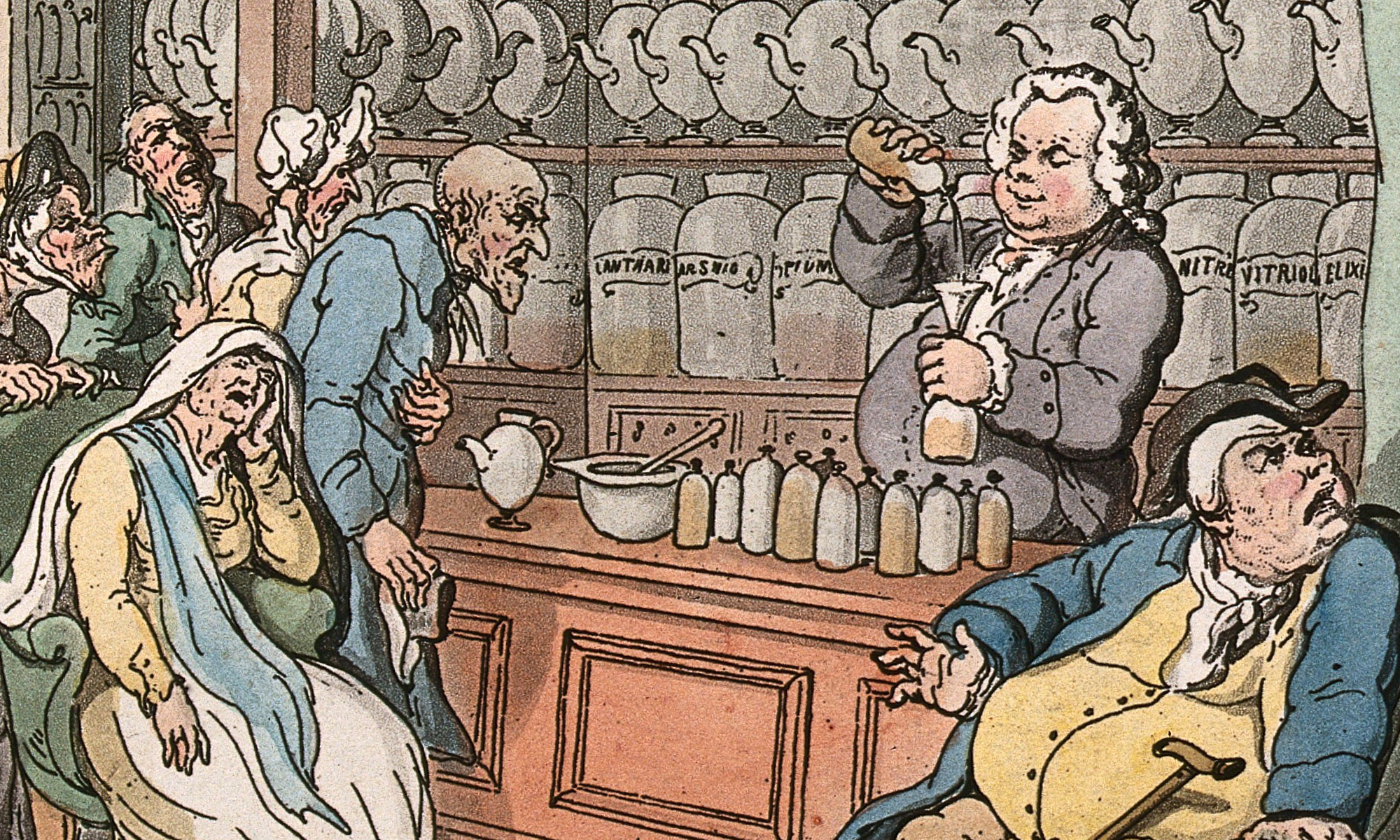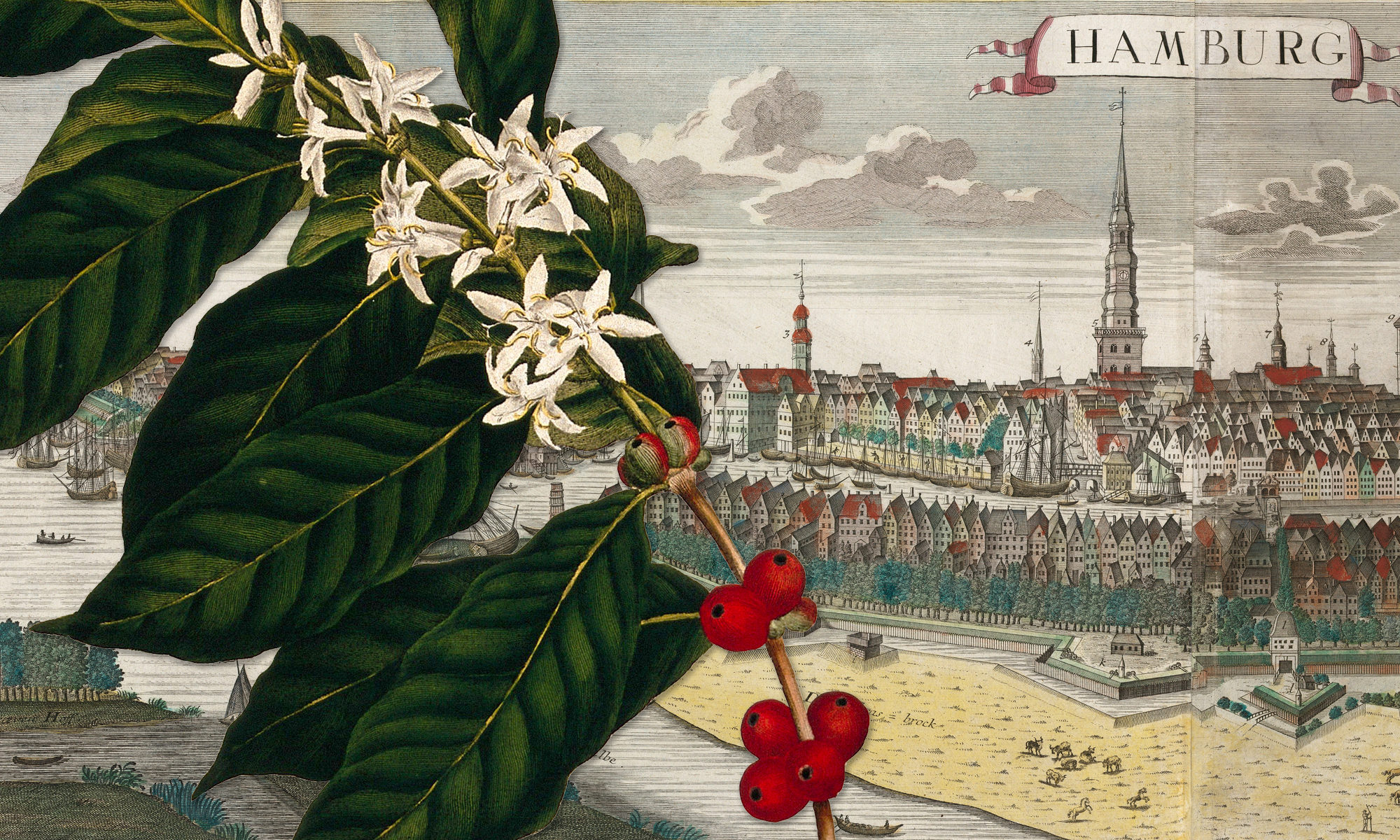Beyond Luxury? Mapping Coffee and Tea in Late Eighteenth-Century Hamburg
Gabrielle Robilliard & Johannes Birk
Introduction
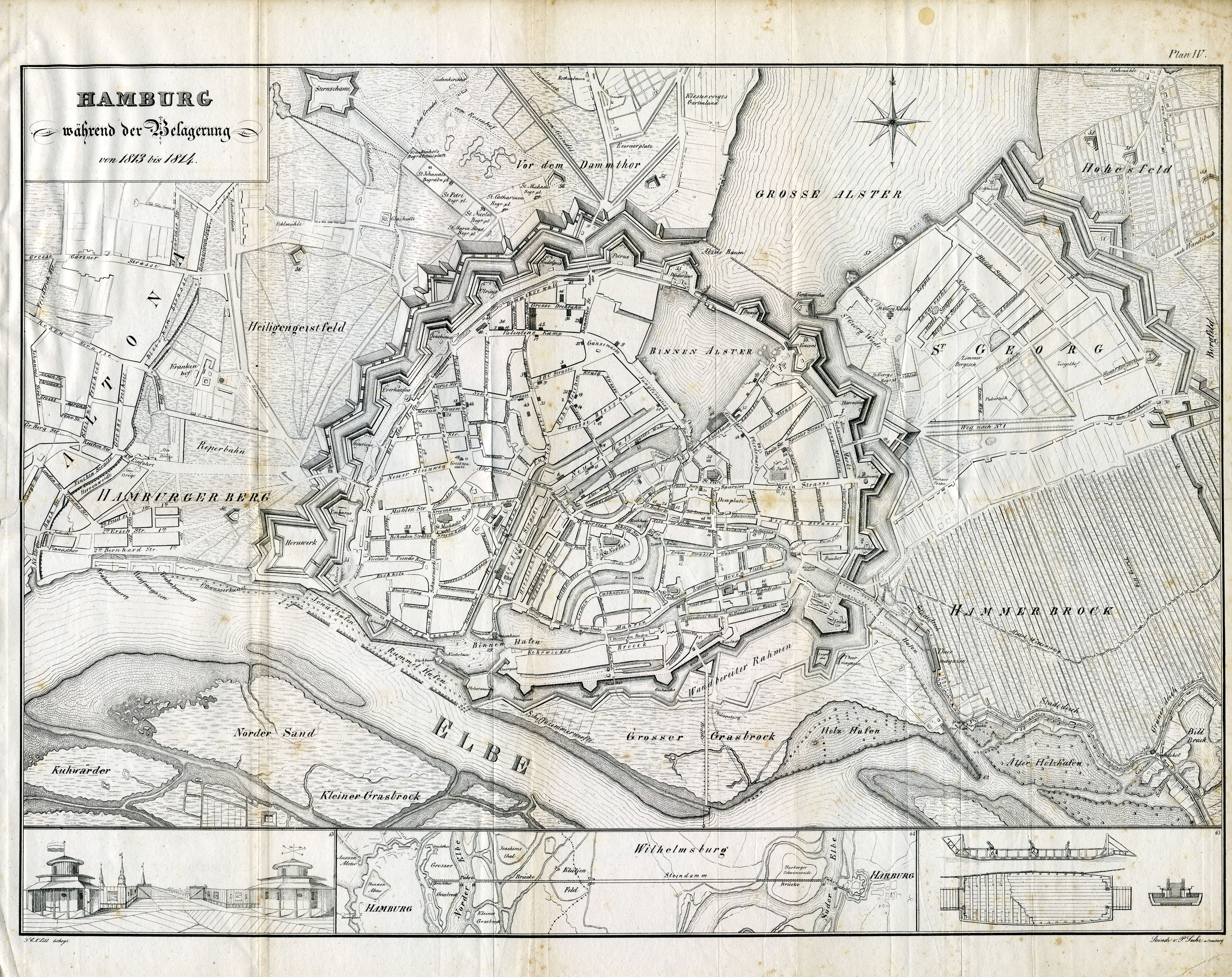
In 1803 the journal Hamburg und Altona published an article, entitled ‘Auch einige Worte über die Rumfordsche Suppe’ (some words on Rumford soup), [1] on how the working poor lived. Whereas in former times a family of five might have managed on 300 Mark per year, the author considered it better to calculate with a budget of 720 Mark, and went about setting out in detail an annual schedule of expenditure. ‘Coffee, tea, sugar and milk’, he estimated, would cost at least 70 Mark per annum – slightly more than the amount the family might spend on rent (60 Mark). All other meals together (excluding alcohol), he supposed, might come to 312 Mark. This fictive family was predicted to spend just shy of 10% of its annual budget on warm caffeinated beverages and the sugar and milk that went with them. [2] Whether or not these figures are accurate, they suggest that by around 1800 coffee and tea had become an essential, yet my no means inexpensive, part of everyday consumption in Hamburg, even amongst the working poor.
Does this narrative tally with what we know about the supply of tea and coffee to Hamburg during the latter eighteenth century? Data from Hamburg’s tollbooks (Admiralitäts- und Convoygeld-Einnahmebüchern) available between 1736 and 1798 indicates that of all the colonial goods entering Hamburg subject to these duties, coffee imports saw the most spectacular rise, with a massive ten-fold increase. [3] In 1790, Fertig and Pfister estimate that coffee consumption was at around 0.8 kg per head in Germany, much of which entered Germany via Hamburg, and its price elasticity remained in-step with other foodstuffs over the period. [4] Tea imports were overall far less impressive, yet for Hamburg and coastal northern Germany tea continued to play an important role in food culture and sociability. [5] Various studies have demonstrated that consumption of warm beverages amongst the lower social and economic orders (and even the poor) became widespread during the eighteenth century, highlighting the need to pay attention to the practices of these particular social groups in order to fully understand the dynamics of consumption and related social practices in early modern societies. [6]
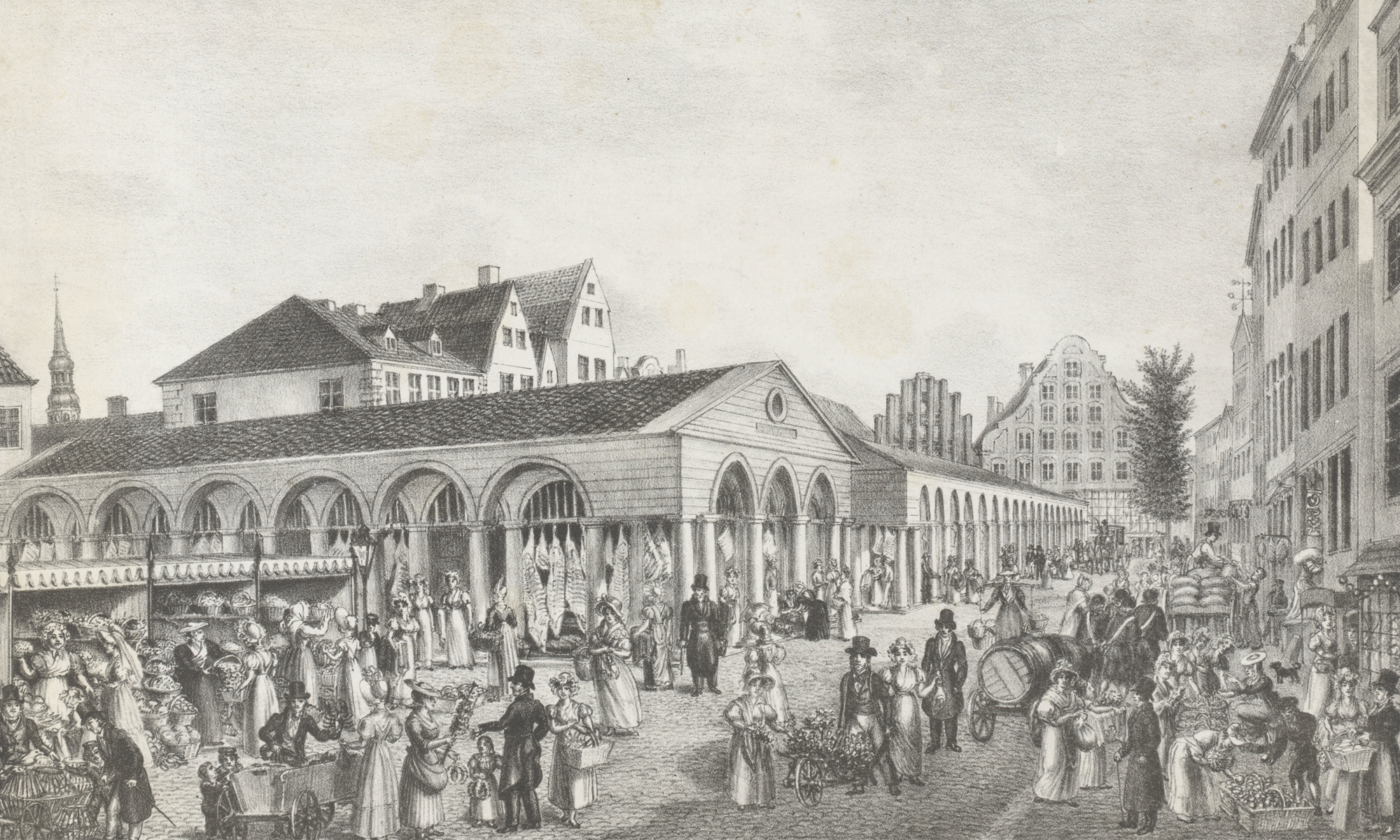
With rapid increases in supply and evidence for greater and more ubiquitous consumption, the question remains as to how Hamburgers got hold of their caffeinated beverages? Coffeehouses and other gastronomic institutions were important – and very public and visible – spaces for consuming tea and coffee, but domestic consumption became dramatically more significant as the century progressed. Licensing records for coffee and tea retailers indicate this trend, with the number of authorised vendors almost doubling from 174 in 1732 to 327 in 1788. [7] Throughout the same period the number of licensed coffeehouses remained under twenty, although there were most likely other, unlicensed spaces in which Hamburgers could buy a cup of tea or coffee. [8] What shape did this altogether considerable retail economy take in late eighteenth-century Hamburg? Who sold tea and coffee in the city? Where were their shops/selling spaces located? What does their spatial distribution tell us about urban retail and consumption phenomena?
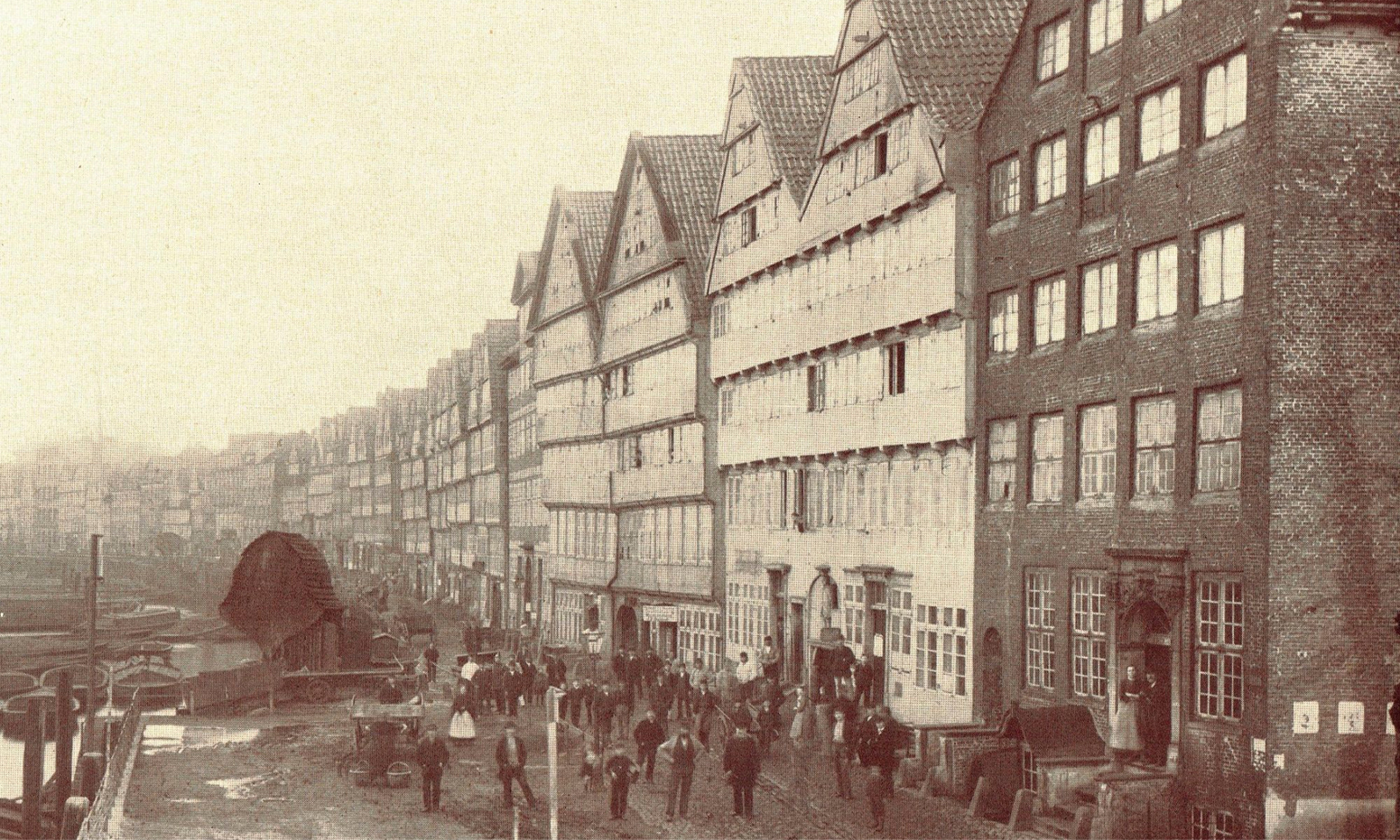
As licensing records do not document the addresses of retail licence-holders, to analyse the retail of coffee from a spatial perspective we drew upon the Neues Hamburgisches Adreß-Buch, a kind of trade and person directory that has been digitised by the Staats- and Universitätsbibliothek Hamburg. Registers of notable persons had been published on and off in Hamburg since the late seventeenth century, but it was not until the 1780s – as the city’s population was approaching 100,000 – that systematic directories of urban commercial life including retailers appeared. The Neues Hamburgisches Adreß-Buch (NHAB) [9] was the brainchild of the merchant, publisher, and printer Johann Heinrich Herrmann and was initially a private venture. His approach was novel, in that he strived to create a useful, accurate, and comprehensive reference tool that reflected the everyday commercial reality of Hamburg’s urban space. That meant that rather than listing only persons belonging to certain higher status social and occupational groups, as was the practice hitherto, he included all manner of traders and businesspeople because, as he proclaimed in the preface to the inaugural publication, he ‘was certain that they (the small traders) do business with the greater merchants, and are therefore worthy of an advertisement’. [10]
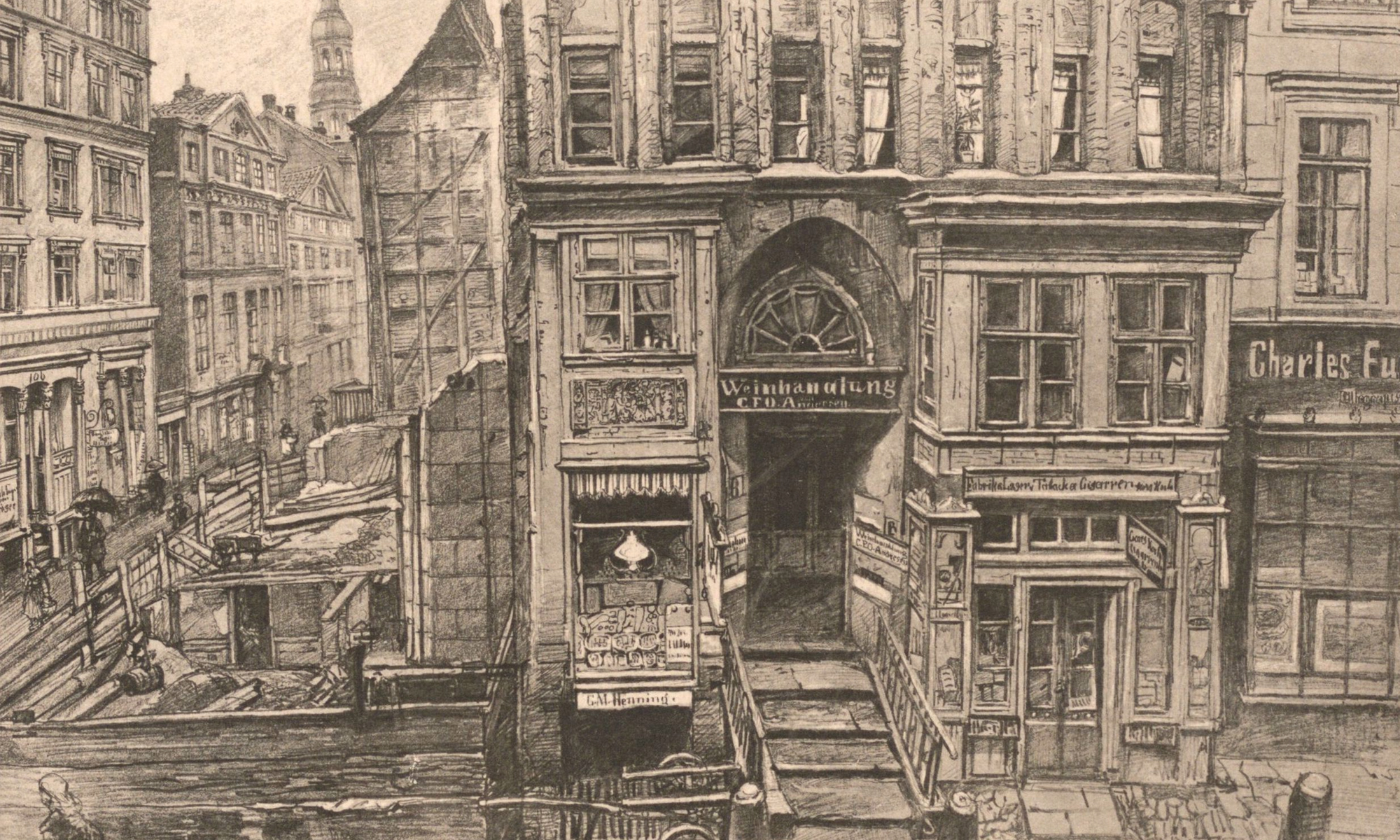
The first issue was published in 1787, with editions appearing annually thereafter. Inclusion was entirely voluntary, and Hermann gathered his data literally by door-knocking his way through the city. [11] Each volume was divided into several sections, of which one was devoted to an alphabetical listing of businesses; this is the section that forms the basis of the maps and diagrams that follow. Business entries were short, consisting of name, main wares sold or traded (using standardised categories), street and, from 1789 onwards, the house number. Due to the complicated system of house numbering in use at the time, we were unable to map at house level, and have worked instead at street level.
A Snapshot, 1789
We focused on entries for the year 1789 (that is, the third edition of the NHAB) in order to take a ‘snapshot’ of tea and coffee retail prior to the major (trade) disruptions of the French Revolution and Haitian Revolutions and the somewhat later French occupation of Hamburg under Napoleon. We compiled qualitative and quantitative data on all entries listing ‘tea’ or ‘coffee’: name of retailer, gender, marital status (of women), street, and goods retailed. As brokers, merchants, coffeehouses, spice merchants, materialists, druggists, and apothecaries were all listed as such, persons selling coffee or tea were most likely stationery retailers selling to a local or perhaps a close regional market. As far as representativeness goes, the number of tea and coffee sellers in the 1789 NHAB was around 50% percent of the total number of licensed coffee and tea retailers in the city licensing records for 1788/89. [12] So what we are dealing with here is in fact a form of advertising, not an administrative directory, and may have appealed to certain groups of retailers more than others.
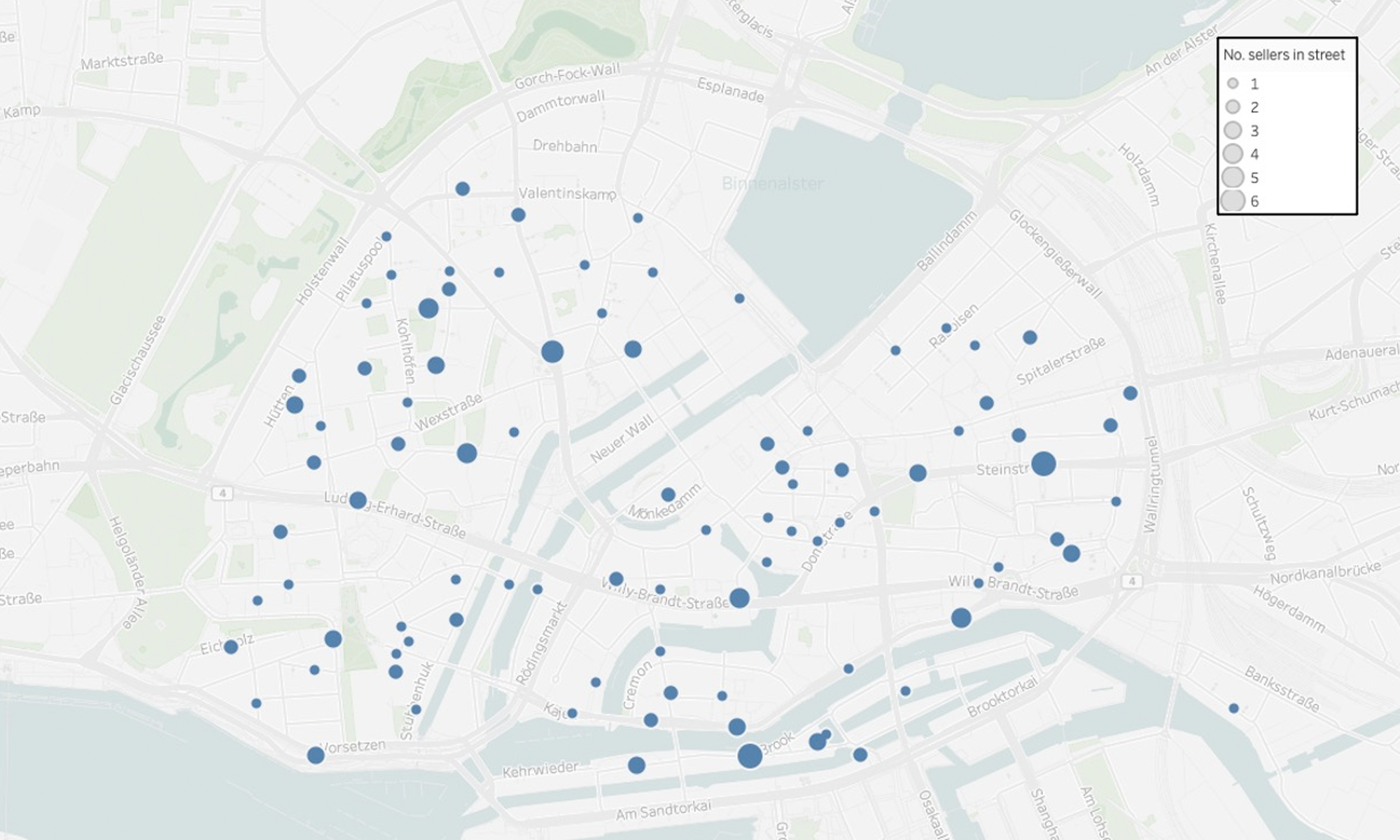
This is a modern map of Hamburg, with the perimeter of the former wall around the old city still clearly visible, although the streets depicted do not always correspond to the layout of the city at the time. In 1789 most of the city’s economic activity still took place within the walls, as reflected in the spatial distribution of sellers on the map. It is noticeable that there were only a few areas of the city that were not populated by coffee- and tea-sellers, such as the precinct between Valentinskamp and the Alster. Otherwise, overall distribution was fairly even throughout the city. Clusters of vendors in single streets are often found in main thoroughfares (e.g. Steinstraße, Neustädter Fuhlentwiete) or town squares (Schaarmarkt, Platz/Plan), however, many sellers were alone in a street. The fairly even distribution suggests that many were possibly catering to their local neighbourhoods as ‘corner stores’, and that purchasing tea and coffee was an everyday practice within urban space. Also worth noting is that although much of the Neustadt (St Michaelis’s parish) west of the central waterway was a traditionally poorer quarter of the city, it was no tea and coffee desert. Nor were the traditionally wealthier parishes of St Petri, St Nikolai, and St Katharinen particularly well-endowed with vendors. In short, tea and coffee sellers – in whatever form – were a ubiquitous part of the streetscape in 1780s Hamburg, irrespective of the social status or wealth of a neighbourhood.
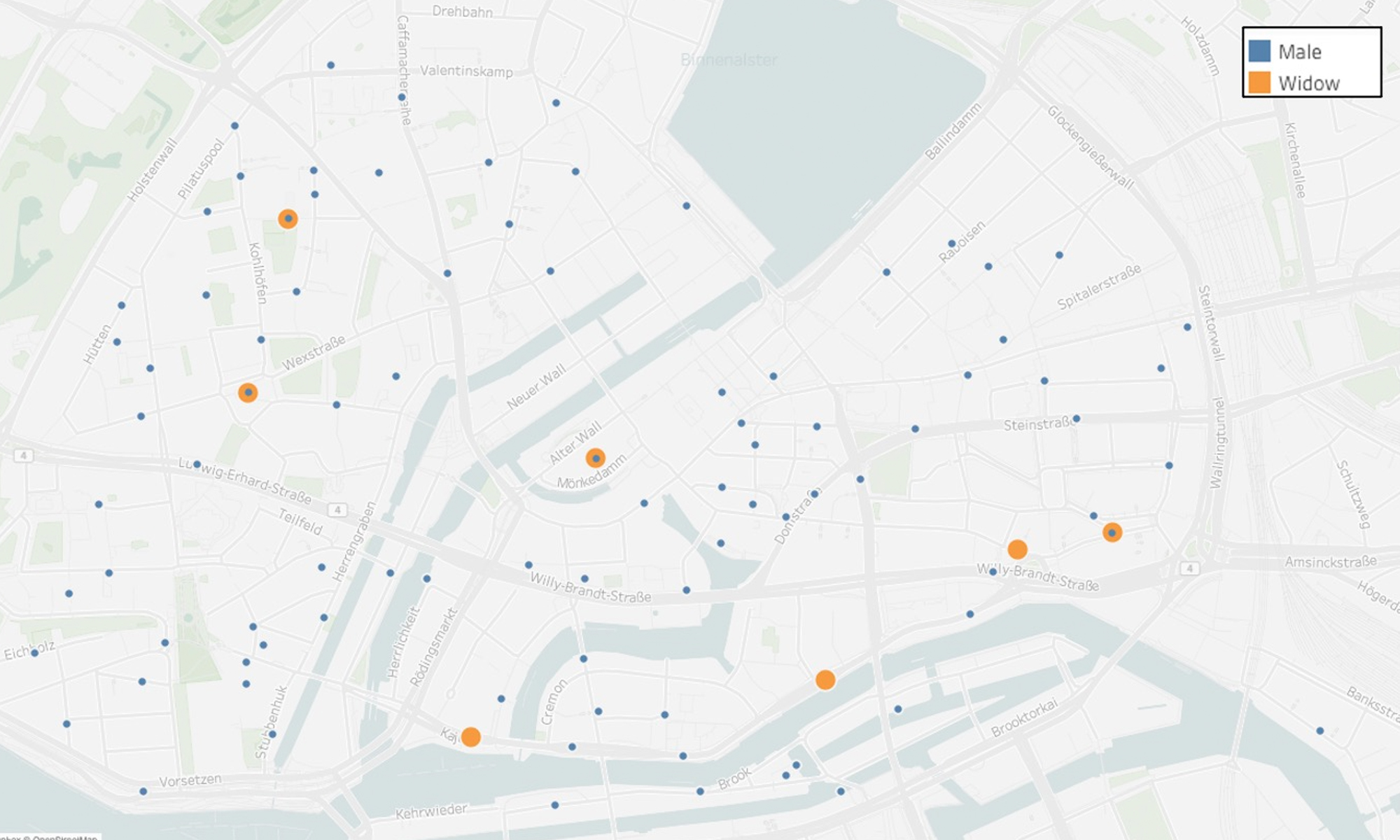
This map shows the spatial distribution according to gender and marital status. All seven women listed in the NHAB were widows, presumably carrying on the family business after the death of their husbands. In 1789 most widow-run businesses were located in peripheral parts of the city, close to the banks of the Elbe and the city walls, although the dataset is too small to trace any particular pattern. Data from the 1788/89 licensing records demonstrate that the retailing of coffee and tea was an overwhelmingly male occupation: almost 90% of licensed sellers were men, most of whom were small-scale and apparently sole traders. [13] However, it was also an economic venture open to women. Around 9% of sellers named in the 1788/89 licensing records were women, around half of whom were independent female traders. [14] The underrepresentation of women – and in particular female sole traders – in the NHAB may be connected to the kinds of business women ran and whether they sought out the kind of publicity an address book could offer. We would need to look at both these sources over a longer series of years to fully appreciate how women engaged in this retail sector as well as in nascent cultures of business advertising.
We can also glean from NHAB entries that most sellers were probably living and trading in the same building; indeed, the 1788 edition specified addresses as either ‘dwelling’ or ‘comptoir’, and we can safely assume that this practice was carried through to the 1789 edition. Only a few entries mentioned the physical buildings retailers inhabited, and most did so in order to specify shops separate to home addresses. Some individuals located on marketplaces and squares were possibly selling from permanent wooden shacks, known as Buden. Most, however, appear to have traded ‘from home’, [15] suggesting a certain fluidity between the household and the workspace for this kind of retail/selling activity, as well as opportunity for a spectrum of formal and informal selling practices.
Bundlings
Jan de Vries has pointed out that it is important to consider consumption bundles when attempting to understand the cultural meanings and social functions of consumption in a particular time and space. [16] This follows also for how intoxicants were bundled together with other intoxicants and/or goods in a directory such as the NHAB: what kinds of goods were associated (or not) with tea and coffee, and what can this tell us about the social and economic identities of consumers? Frequency analysis of the labels used in the address books shows that in the standardised categories used in the NHAB, tea and coffee were by far most frequently bundled together with each other. Of course, this did not mean that sellers only sold tea and coffee, but rather that these goods served as ‘signage’ for a vending business that drew upon a common functional association between tea and coffee. Data from business ledger books would provide greater insight into the relationship between the labels affixed to business in the NHAB and the goods that were actually sold. The alternate, less frequent bundlings reveal it was conceivable to group tea and coffee with various other goods that spoke to different kinds of clientele: these ranged from rags to Dutch goods (colonial goods coming via the Netherlands), tableware, utensils, and wine. This also suggests that coffee and tea were absolutely embedded in the everyday consumption practices and sociability of various socio-economic groups, from workers to the burgher elite, but that (some) retailers were targeting particular groups through these bundling labels, for example, through associating tea with porcelain, or tea and coffee with rags.
Conclusions
These very preliminary findings point to the necessity of attending in particular to vending and consumption amongst the poor to middling sorts. As Hanna Hodacs and Anna Knutsson’s study of poor women’s engagement with coffee in late eighteenth- and early nineteenth-century Stockholm has shown, the experiences and actions of these groups were fundamental in establishing new (not emulative) practices of procurement, preparation, and consumption. [17] This spatial snapshot of coffee and tea retailing in late eighteenth-century Hamburg provides further evidence that lower socio-economic groups were important actors in the market for buying and selling tea and coffee in urban spaces and we need to focus on how these groups shaped vending practices and cultures of consumption in the urban space both in quality and quantity.
References
[1] A cheap but nourishing soup consisting largely of barley and dried peas invented by Benjamin Thompson, Count of Rumford, in 1795 for the Bavarian army. It subsequently found its way into soup kitchens feeding the poor.
[2] ‘Auch einige Worte über die Rumfordsche Suppe’, Hamburg und Altona. Eine Zeitschrift zur Geschichte der Zeit, der Sitten und des Geschmaks 22 (1803): 320.
[3] C. Fertig and U. Pfister, ‘Coffee, Mind and Body: Global Material Culture and the Eighteenth-Century Hamburg Import Trade’, in A. Gerritsen and G. Riello (eds), The Global Lives of Things: The Material Culture of Connections in the Early Modern World (London, 2016), p. 227.
[4] Ibid.; U. Pfister, ‘Great Divergence, Consumer Revolution and the Reorganization of Textile Markets: Evidence from Hamburg’s Import Trade’, Eighteenth Century Economic History Working Papers 266 (2017): 44–46.
[5] J. Schneider & O.-E. Krawehl (eds), Statistik des Hamburger seewärtigen Einfuhrhandels im 18. Jahrhundert: nach den Admiralitäts- und Convoygeld-Einnahmebüchern (St. Katharinen, 2001), pp. 541–42; M. North, Genuss und Glück des Lebens: Kulturkonsum im Zeitalter der Aufklärung (Köln, 2003), pp. 200–209.
[6] For example A. E. C. McCants, ‘Poor Consumers as Global Consumers: The Diffusion of Tea and Coffee Drinking in the Eighteenth Century’, The Economic History Review 61 (2008): 172–200; A. Knutsson & H. Hodacs, ‘When Coffee was Banned: Strategies of Labour and Leisure among Stockholm’s Poor Women, 1794–1796 and 1799–1802’, Scandinavian Economic History Review (2021): 1–23.
[7] Staatsarchiv Hamburg, 311-1 I_214 Band 94, Wedderechnungen, 1732; 311-1 I_214 Band 145, Wedderechnungen, 1788.
[8] See Staatsarchiv Hamburg, 311-1 I_214, Band 94–145.
[9] The title of this publication varied slightly over time, however, I will use the acronym NHAB to refer to all annual issues after 1787.
[10] ‘Vorbericht’, in Das Neue Hamburgische Adreß-Buch auf das Jahr 1787 (Hamburg, 1787).
[11] For an overview of the Hamburg address books see U. Hagenah, ‘Hamburger Adressbücher. Eine historische Skizze mit Anmerkungen zum Digitalisierungsprojekt der Staats- und Universitätsbibliothek Hamburg’, Zeitschrift des Vereins für Hamburgische Geschichte 97 (2011): 57–97.
[12] 327 no. in 1788/89 licensing records. See Staatsarchiv Hamburg, 311-1 I_214 Band 145, Wedderechnungen, 1788.
[13] Around 88% of traders were male and just over 2% were companies (presumed male). Staatsarchiv Hamburg, 311-1 I_214 Band 145, Wedderechnungen, 1788.
[14] Staatsarchiv Hamburg, 311-1 I_214 Band 145, Wedderechnungen, 1788. This is still a relatively modest number. In Leiden around 80% of new coffee and tea licenses after 1750 were issued to women. See D. van den Heuvel & E. van Nederveen Meerkerk, ‘Households, Work and Consumer Changes: The Case of Tea and Coffee Sellers in Eighteenth-Century Leiden’, MEMS Working Papers 2 (2014): 7.
[15] Of course, there could have been spatial separation between living and selling spaces within the dwelling.
[16] J. de Vries, The Industrious Revolution: Consumer Behavior and the Household Economy, 1650 to the Present (Cambridge, 2008), esp. pp. 31–33.
[17] Knutsson and Hodacs, ‘When Coffee was Banned’.
